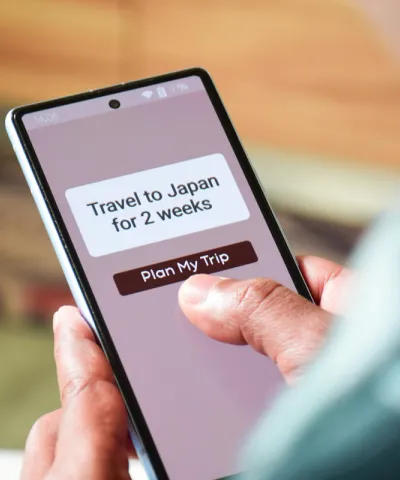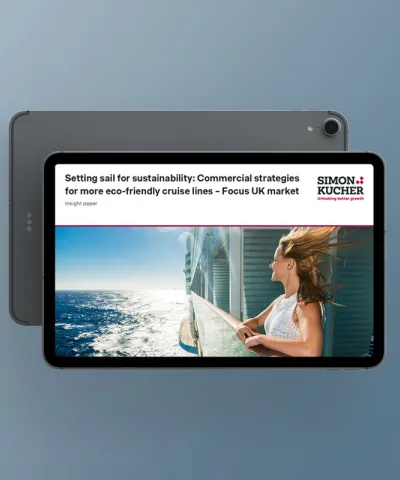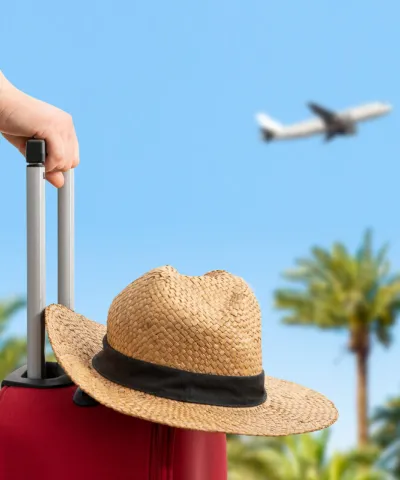Competition across the hotel landscape is fierce. How can you ensure your business thrives and stands out from competitors? The answer: a strong hospitality marketing strategy.
Travel is back on the agenda – and players in the hospitality industry are hoping for booming business. However, as our recent study shows, economic instability is causing consumers to be more cautious with their discretionary spending habits. In our survey, 44 percent of respondents stated they would reduce their budget for vacations, while only 29 percent said they would increase it.
The question for hotel companies in the Travel, Tourism & Leisure sector is how to attract this segment of customers with a higher willingness to pay, and how to activate customers who are more cautious about non-essential spending.
What is hospitality marketing?
In this competitive environment, a great hotel location isn’t enough. It takes a variety of factors and a strong marketing strategy to ensure your business is relevant and visible to your target customers.
Effective hospitality marketing can help you to achieve long-term, sustainable growth by helping you to:
- Create memorable experiences for guests by meeting the needs of both price-sensitive and less sensitive customers
- Boost loyalty, increase repeated visits, improve length of stay, drive traffic to the direct channel, and increase spend per stay
- Develop a clear and consistent sales dialogue that converts!
- Drive ROI on your marketing campaigns
How is customer behavior changing in the hospitality industry?
In the past few years, concern for public health halted travel plans. Now people are traveling again, but many consumers are still cautious and prefer the flexible rates and policies that were introduced during the pandemic.
The hospitality industry has also seen a rise in new customer segments such as digital nomads, or business travelers who combine work trips with leisure activities. Coined with catchy names like “bleisure” travel or workations, this new trend spells opportunities for the hospitality industry.
Upscale hospitality businesses are experiencing growth too, with guests expecting more exclusive experiences. Then there’s the increasing interest and emphasis on sustainability with guests seeking eco-friendly accommodations and services.
Top four hospitality marketing measures
To make the most of these trends while also managing the negative impacts of economic uncertainty, here are our top four marketing measures for hotel companies.
- Develop a compelling value proposition by segmenting customers and aligning your offering with their needs
First, identify your different customer segments and their corresponding needs to understand whether you have the right value proposition in terms of price and benefits. This step not only shines a light on where to adapt your offering, brand, pricing, and value proposition. It also illuminates opportunity among currently untargeted segments.
When working with hotels, we often reveal untapped potential in the meetings, incentives, conventions, and exhibitions (MICE) segment. We then help our clients to create custom and optimized policies for MICE groups. Of course, this segment’s growth depends on the economic climate – a secure market means more meetings and conventions that benefit the hospitality industry.
Another key growth area is sustainability. Our most recent Global Sustainability Study found that consumers are willing to a premium of 24% to 37% for eco-friendly alternatives. However, if you want to go green, you need to go fast: We also found that as businesses in a market introduce more options, there is heightened competition. Sustainability can evolve to become the norm rather than the exception, and over time the potential to achieve a premium weakens. Businesses that act quickly will benefit from first-mover advantages.
Even in volatile times, you can adapt your value proposition to attract customers. In our recent uncertainty survey, we asked consumers how they expect leisure, travel, and tourism companies to alleviate their uncertainty around spending. Unsurprisingly, the top ranked measure was “higher discounts.” This is of course bears risk for companies and needs to be accompanied by a well-thought-out strategy to avoid damaged price perception and margin losses.
An alternative measure, which came in close second in our survey, is to focus on creating suitable, lower-priced alternatives for this segment. Meanwhile, micro-targeted promotions can capture guests who are willing to pay more while effectively balancing the price-value equation. These promotions are designed to reach specific segments of the market with tailored offers and personalized messages, catering to their unique preferences and needs. - Differentiate your business from the competition through personalized marketing
Let’s not forget another customer segment more confident in spending and willing to pay a premium for innovative offerings. Here, personalized marketing can be very effective in adding a layer of luxury at every step of the customer journey.
Personalization can be used to facilitate the booking process, build excitement ahead of the stay, provide superior customer service, and help you to offer more relevant and unique experiences (and improve your cross-selling rates). It can also be used to develop personalized loyalty programs that include exclusive offers.
Loyalty programs can even incorporate insights from behavioral economics to boost retention and conversion. Starbucks, for example, has followed this approach with its web3 loyalty program. Members of Starbucks Odyssey complete interactive games or challenges to collect digital collectibles in the form of NFTs (non-fungible tokens). These NFTs then unlock digital, physical, and experiential benefits. Hotel chains could consider something similar: “Find the clues hidden across our different resorts to unlock an exclusive members-only experience voucher.”
Develop an effective omnichannel approach
Once you have aligned your value proposition with your target segments, you need to ensure consistency across all channels. A homogenous approach should not only be visible in all of your hotels, ensuring consistent standards, but also in a consistent price-value relationship.
The hospitality industry, alongside airlines, has a high level of maturity in the field of dynamic pricing, where prices are optimized in real time. However, at Simon-Kucher we see many opportunities that are yet to be unlocked. Check out our customizable dynamic pricing platform Simon-Kucher Dynamica | SmartRates designed for leisure and travel companies that require a bespoke solution.
We also help our clients find the optimal channel mix by identifying the most effective and profitable distribution channels and aligning their marketing efforts and investments to drive direct sales. - Drive ROI on your marketing campaigns using the power of data
Data is a crucial component of hospitality marketing today. Data-driven marketing not only helps you improve your visibility (e.g., through SEM research/following an SEO report template. You can also use existing data and analytics (e.g., from your CRM such as Monday.com or alternatives) to create targeted marketing campaigns and messages based on previous preferences and behavior, efficiently allocating your media budget through channels based on return on ad spend (ROAS).
Data is also the key enabler and trigger for personalization. It allows hospitality companies to segment their guest data base and then activate specific measures. Meanwhile, data from online reviews can further help you adjust your value and price proposition.
Looking to enhance your hospitality marketing strategy?








